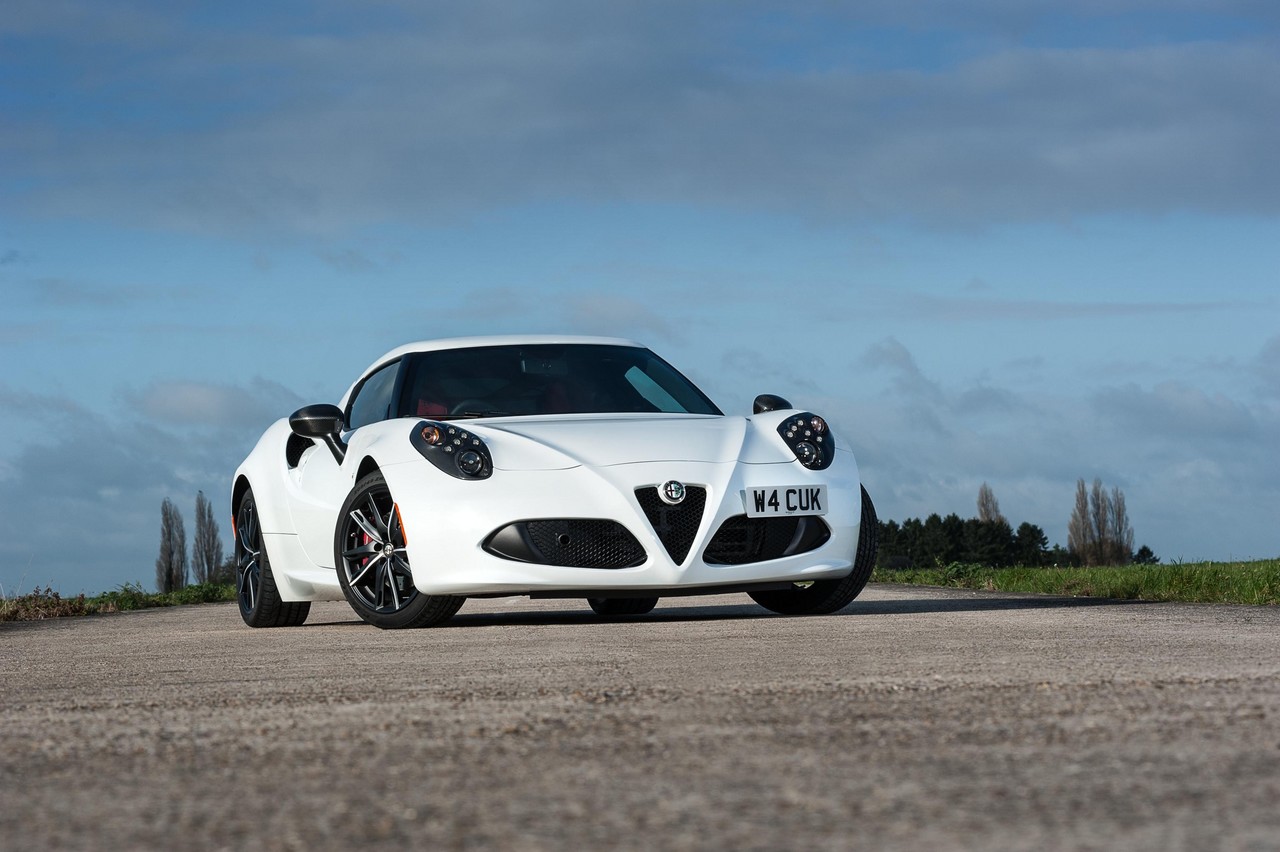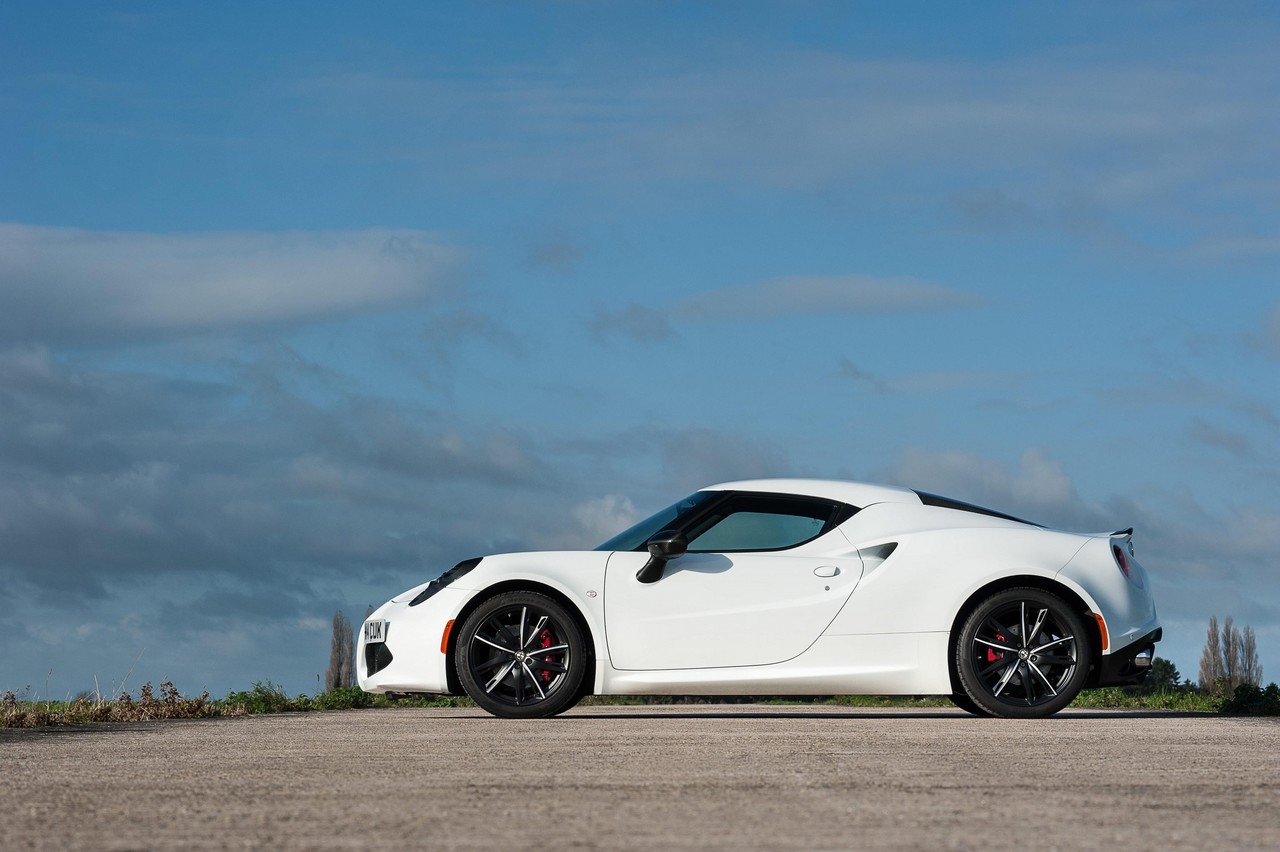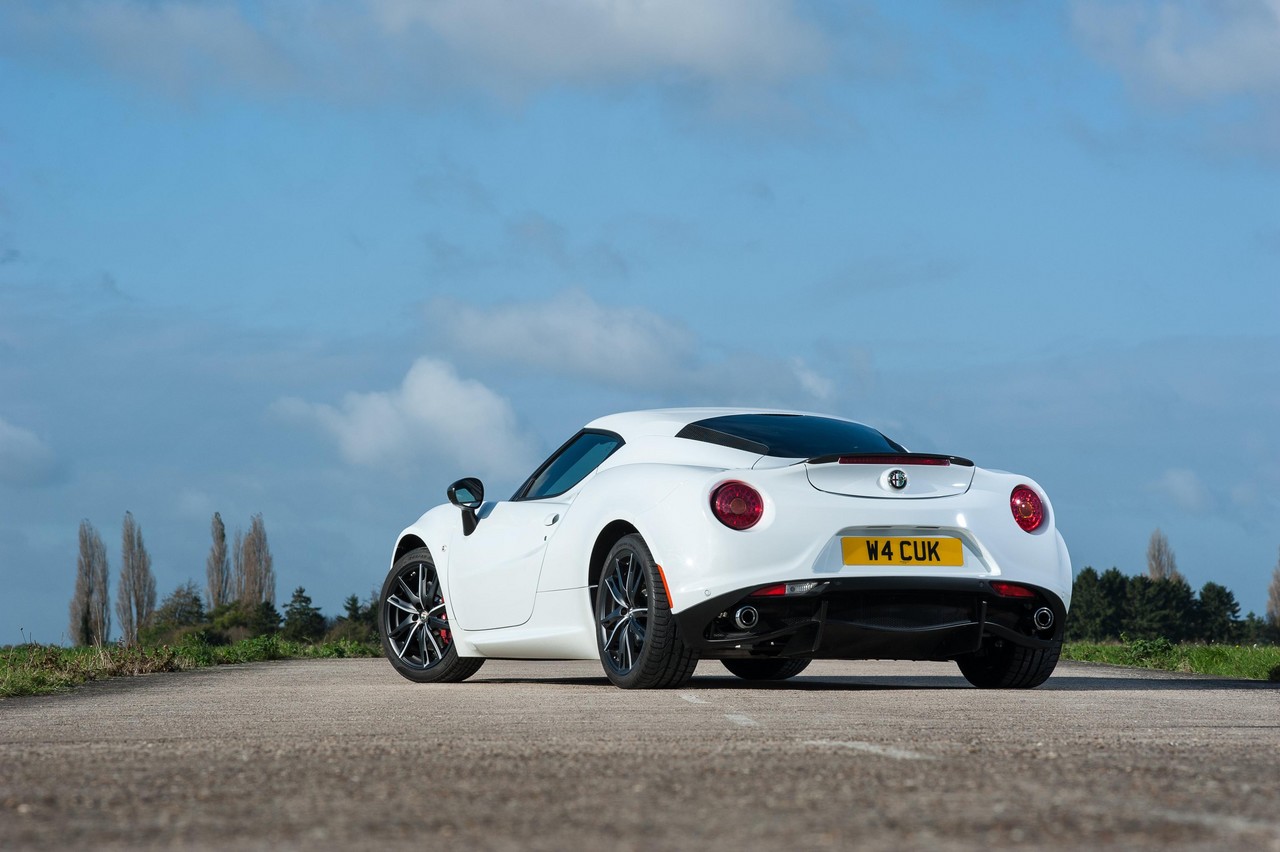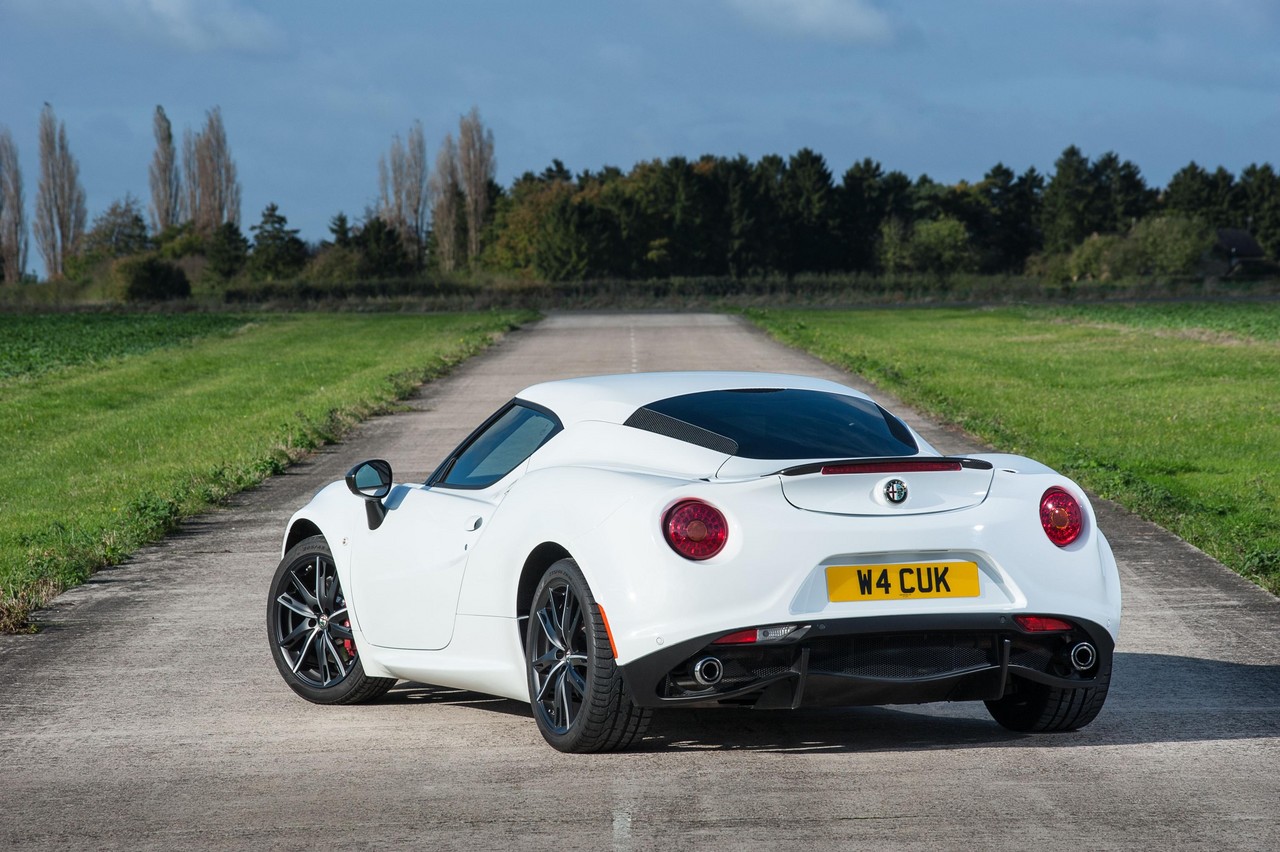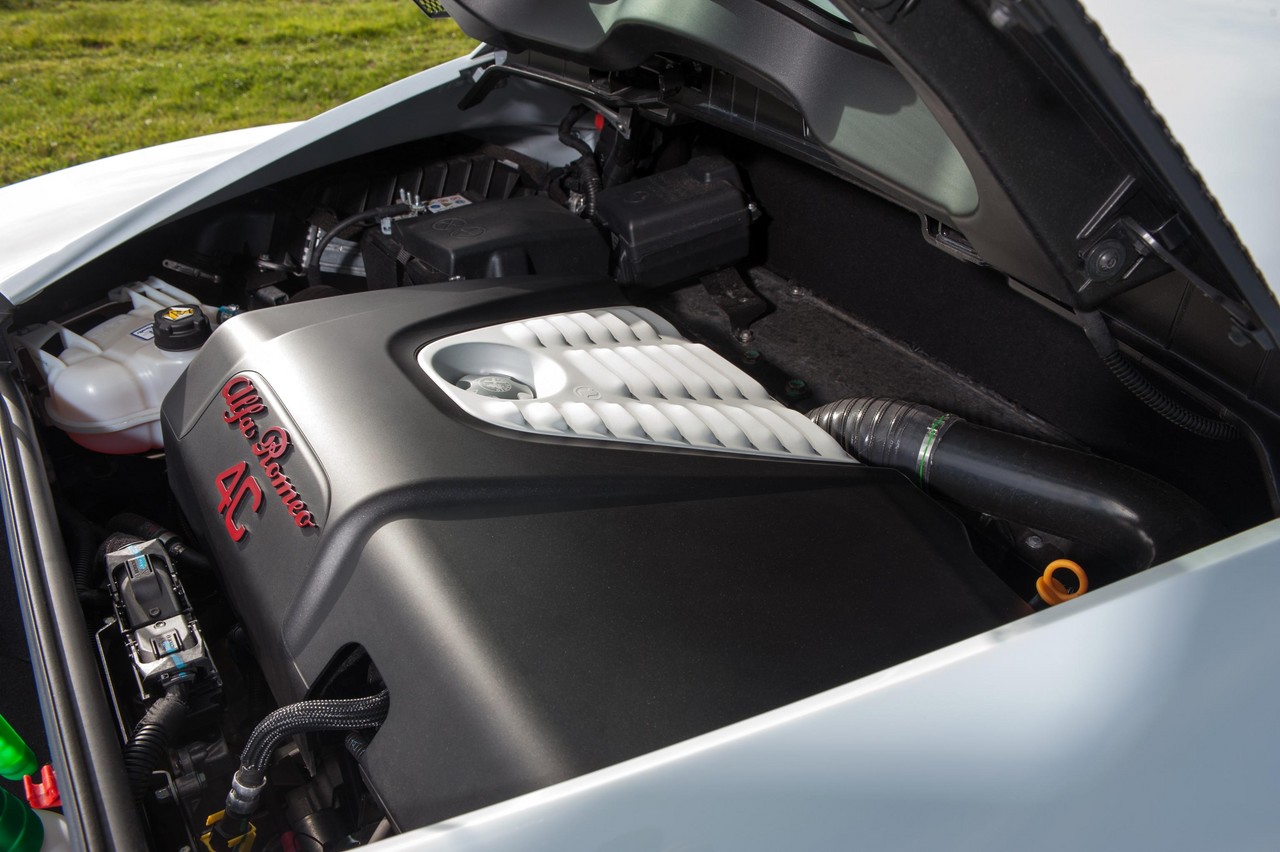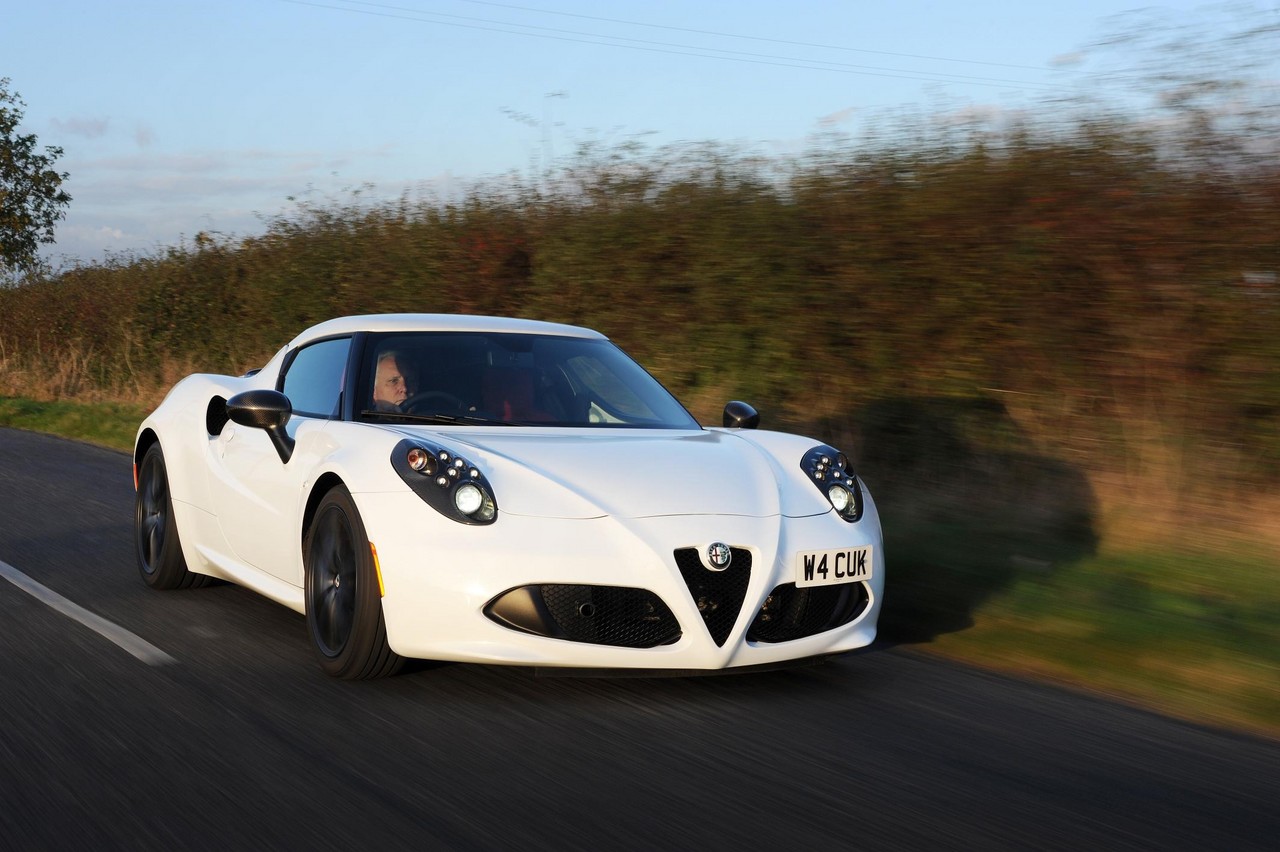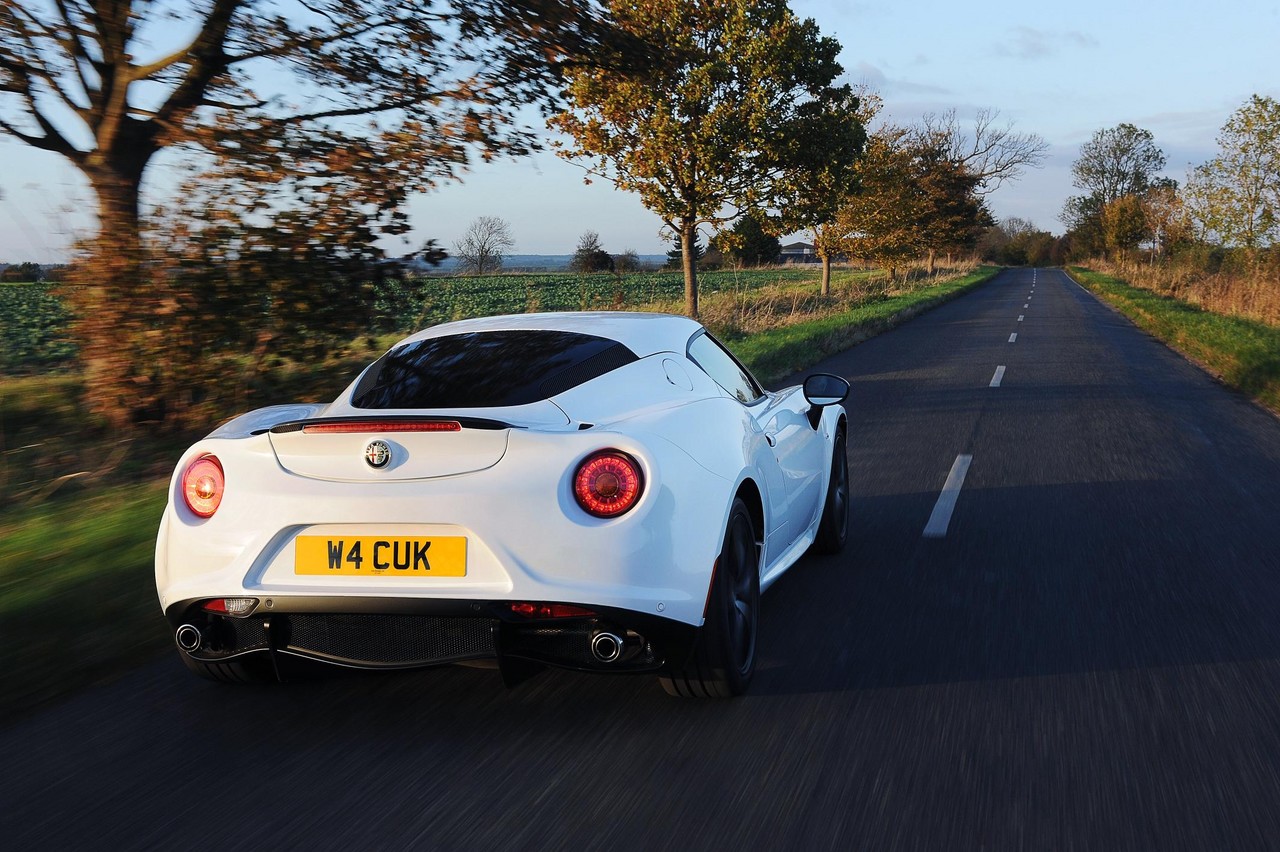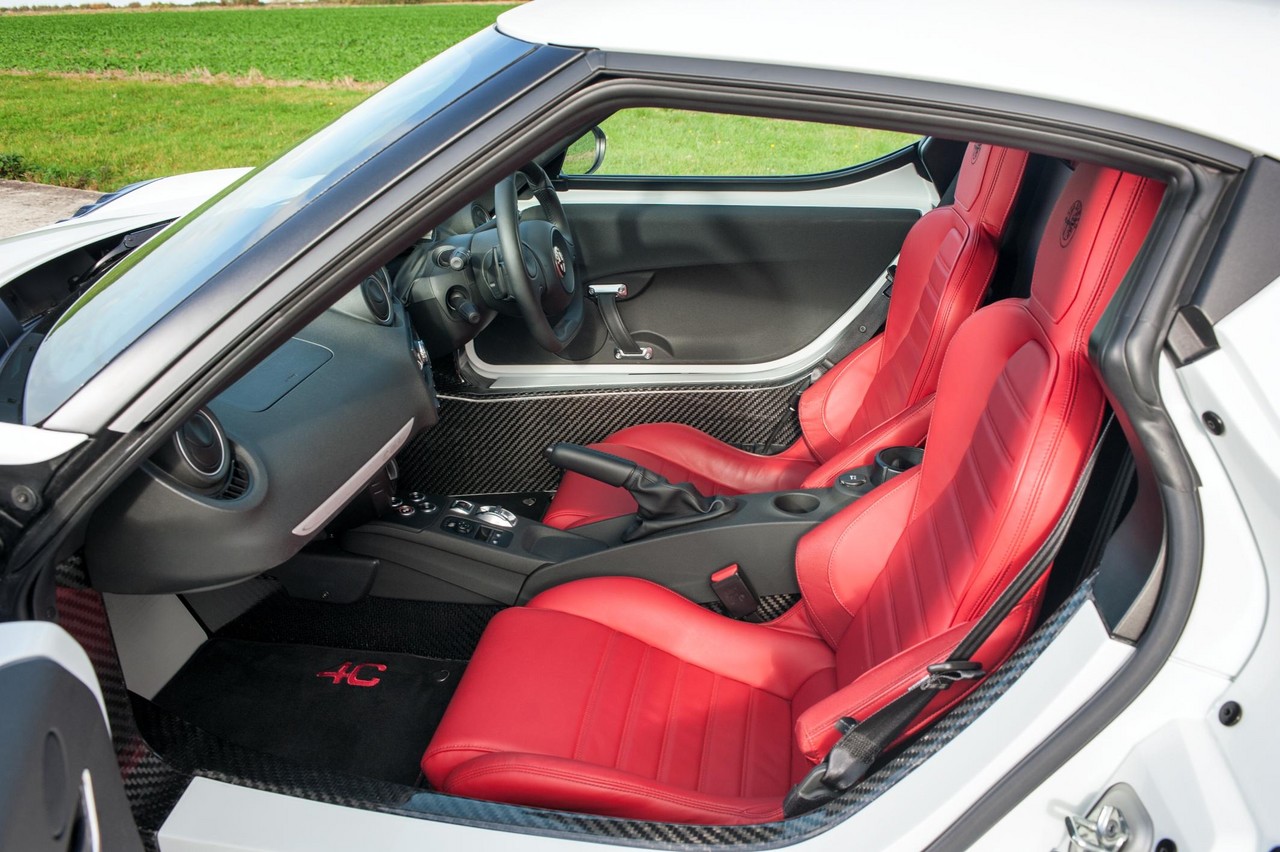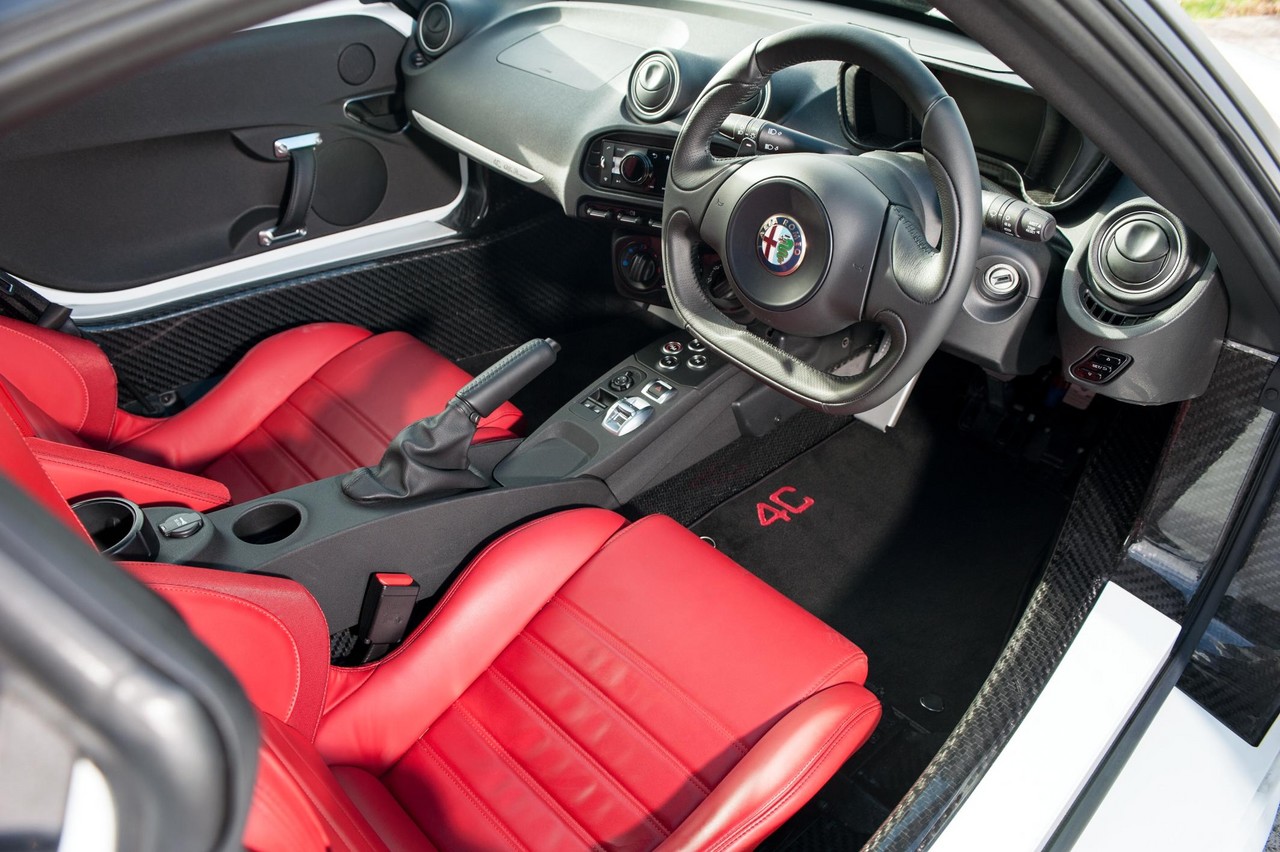
- Involving handling
- Tactile steering
- Lightweight carbon-fibre body
- Firm seats
- Lack of power steering can be a chore
- Distinct lack of storage
Overview
Released in Australia in January 2015, the Alfa Romeo 4C was a mid-engined, two-seat coupe. Manufactured at Maserati’s Modena plant, the rear-wheel drive Alfa Romeo 4C was powered by a 1.75-litre turbocharged four-cylinder petrol engine that was mated to a six-speed dry clutch transmission. Production of the 4C was limited to 3500 vehicles per year.
1750 Turbo Engine
Described as ‘an evolution’ of the 1.75-litre turbocharged petrol engine used in the Alfa Romeo Giulietta QV , the 4C’s engine had an aluminium alloy block with cast-iron liners, an aluminium bedplate, an aluminum-alloy cylinder head, forged aluminium pistons, a forged steel crankshaft, direct fuel injection (operating at 200 bar), double overhead camshafts, variable intake and exhaust valve timing, four valves per cylinder, a turbocharger which provided peak boost pressure of 1.45 bar (21.75 psi), a pulse converter exhaust manifold that harnessed pressure waves to increase torque at low engine speeds, a wastegate valve, and a compression of 9.25:1.
The Alfa Romeo 4C could accelerate from rest to 100 km/h in 4.5 seconds and had a top speed of 100 km/h.
Twin clutch transmission (DCT)
The dual dry clutch transmission had automatic and sequential gearshift modes with the latter operated via steering wheel gearshift paddles. Furthermore, the Alfa Romeo ‘DNA’ selector provided selectable Dynamic, Natural, All Weather and Race modes; a Launch Control function also enabled high-performance standing starts.
Chassis and dimensions
The Alfa Romeo 4C had a 65 kg carbon-fibre monocoque with front and rear aluminium frames and SMC (Sheet Moulding Compound) bodywork. As such, the 4C was 3989 mm long, 1864 mm wide, 1183 mm tall, had a 2380 mm long wheelbase and a kerb weight of 1025 kg (with a 40:60 weight distribution).
The Alfa Romeo 4C had a drag coefficient of 0.335 Cd, though Alfa Romeo claimed that was the lowest value among cars with negative lift (which contributed to high speed stability).
Suspension and steering
The Alfa Romeo 4C had
- double wishbone front suspension with high-strength steel tubular-control arms, aluminium knuckles and a tubular anti-roll bar; and,
- MacPherson strut rear suspension which included shock absorbers with hollow piston rods and side-load springs, high-strength steel tubular-control arms and aluminium knuckles.
Furthermore, the Alfa Romeo 4C had unassisted, rack-and-pinion steering.
| Engine | Trans. | Peak power | Peak torque | |
|---|---|---|---|---|
| Alfa Romeo 4C | 1.75-litre turbo petrol I4 (939 B 1000) |
6sp DCT | 177 kW at 6000 rpm | 350 Nm at 2200-4250 rpm |
Safety equipment
Standard safety equipment for the Alfa Romeo 4C included dual front airbags, ABS, cornering brake control, electronic stability control, traction control and front seatbelts with pretensioners and load limiters.
Braking package
The Alfa Romeo 4C had 305 mm by 28 mm dual-cast, perforated front brake discs with fixed four-piston Brembo calipers and 292 mm by 22 mm perforated rear brake discs with dual opposing calipers.
Features
Standard features for the Alfa Romeo 4C included 17-inch front and 18-inch rear alloy wheels with 205/45 ZR17 88Y XL front and 235/40 ZR18 95Y XL rear Pirelli P Zero AR tyres, a four speaker sound system, Bluetooth connectivity, air conditioning, black fabric sports seats with red stitching, cruise control, bi-LED headlights, LED tail-lights, rear parking sensors, a leather-wrapped steering wheel with gearshift paddles, remote central locking, power windows and mirrors, a height and reach adjustable steering wheel, digital instrument panel, instrument gauges (for turbo pressure, oil temperature and a G-meter), a 12 volt power socket, aluminium pedals and footrest, tyre pressure monitoring, an alarm and immobiliser.
As standard, the Alfa Romeo 4C was fitted with an electronically-controlled ‘Q2’ rear differential.
Alfa Romeo 4C Launch Edition
Production of the Alfa Romeo 4C Launch Edition was limited to 1300 vehicles, of which Australia had an allocation of 75 vehicles. Compared to the standard 4C, the 4C Launch Edition will be distinguished by its:
- Race suspension tuning (including front- and rear-sway bars and shock absorbers);
- Staggered 18-inch front and 19-inch rear forged wheels painted in Matte Black;
- Carbon fibre headlight surrounds, wing mirror covers and rear spoiler;
- Racing exhaust;
- Sport seats with leather and black microfibre trim;
- Power mirrors;
- Red or White interior accent stitching on the instrument panel steering wheel, floor mats and door handles;
- Interior carbon fibre trim plates, cluster bezels, gear shift bezels and passenger side trim plates;
- Carbon-fibre rear spoiler and mirror caps;
- Red lacquered brake calipers; and,
- Rosso Alfa or Madreperla White exterior paint finishes.
2019 Alfa Romeo 4C Competizione
The Alfa Romeo 4C Competizione was released in Australia in August 2019. Compared to the standard Alfa Romeo 4C, the Competizione editions had sports suspension, an Akrapovic titanium central exhaust (with dual-mode function) and carbon fibre exit surrounds. Inside, the Alfa Romeo 4C Competizione had an aluminium dashboard insert, the seats were upholstered in black leather and microfibre, and the sport steering wheel had a microfibre insert.
Visually, the Alfa Romeo 4C Competizione could be identified by its Vesuvio Matte Grey paint finish, exposed carbon fibre roof, carbon fibre rear spoiler and mirror covers, carbon fibre side air intake and unique bonnet and roof livery. Australian deliveries of the Alfa Romeo 4C Competizione were limited to ten vehicles; each had a recommended retail price of $119,900 (excluded on-road costs).
Related links
- Press Kit: Alfa Romeo 4C (February 2015)
- Specifications: Alfa Romeo 4C (February 2015)
- Alfa Romeo Australia: Alfa Romeo 4C
- Wikipedia.org: Alfa Romeo 4C
